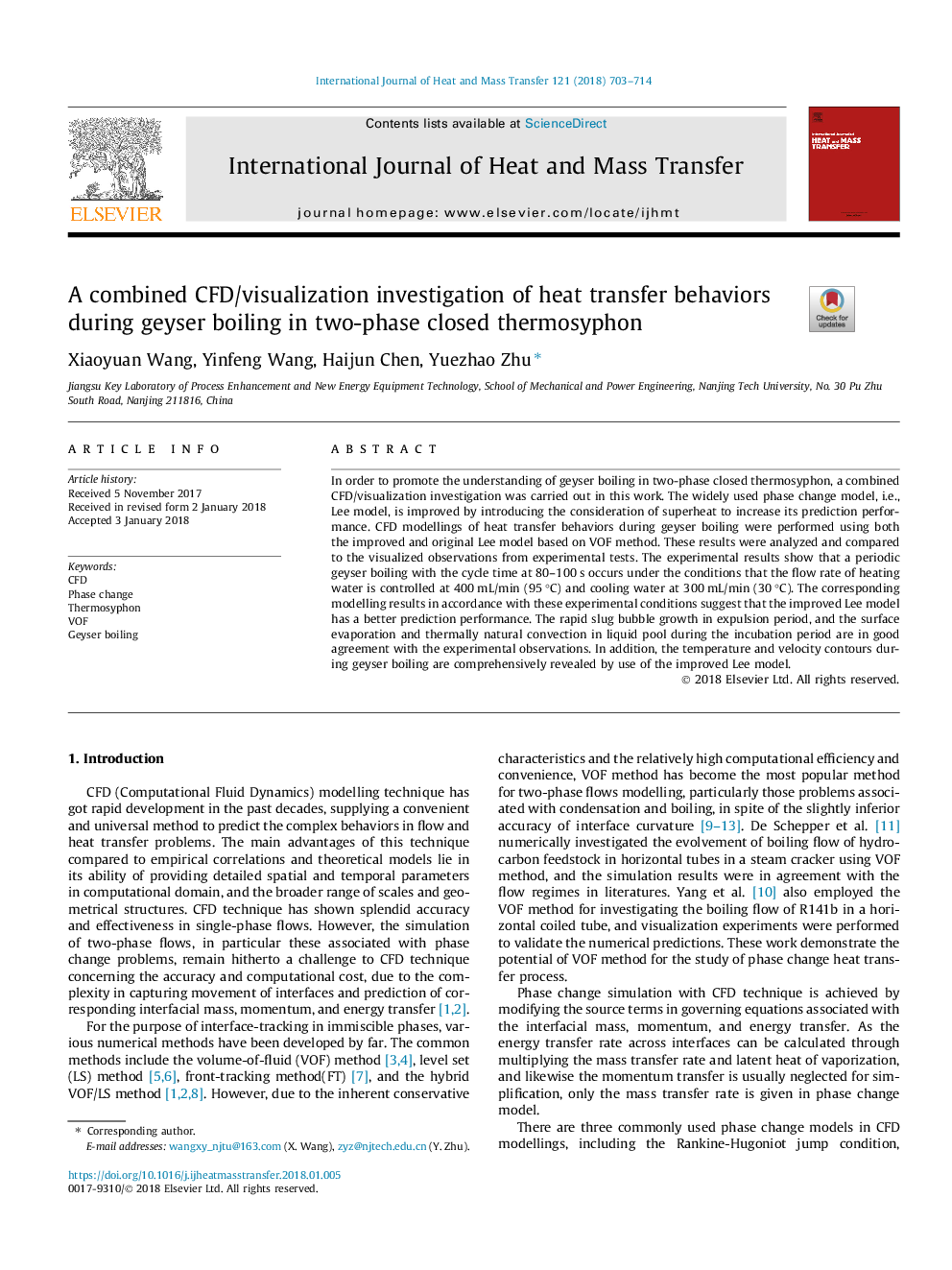| Article ID | Journal | Published Year | Pages | File Type |
|---|---|---|---|---|
| 7054507 | International Journal of Heat and Mass Transfer | 2018 | 12 Pages |
Abstract
In order to promote the understanding of geyser boiling in two-phase closed thermosyphon, a combined CFD/visualization investigation was carried out in this work. The widely used phase change model, i.e., Lee model, is improved by introducing the consideration of superheat to increase its prediction performance. CFD modellings of heat transfer behaviors during geyser boiling were performed using both the improved and original Lee model based on VOF method. These results were analyzed and compared to the visualized observations from experimental tests. The experimental results show that a periodic geyser boiling with the cycle time at 80-100â¯s occurs under the conditions that the flow rate of heating water is controlled at 400â¯mL/min (95â¯Â°C) and cooling water at 300â¯mL/min (30â¯Â°C). The corresponding modelling results in accordance with these experimental conditions suggest that the improved Lee model has a better prediction performance. The rapid slug bubble growth in expulsion period, and the surface evaporation and thermally natural convection in liquid pool during the incubation period are in good agreement with the experimental observations. In addition, the temperature and velocity contours during geyser boiling are comprehensively revealed by use of the improved Lee model.
Related Topics
Physical Sciences and Engineering
Chemical Engineering
Fluid Flow and Transfer Processes
Authors
Xiaoyuan Wang, Yinfeng Wang, Haijun Chen, Yuezhao Zhu,
